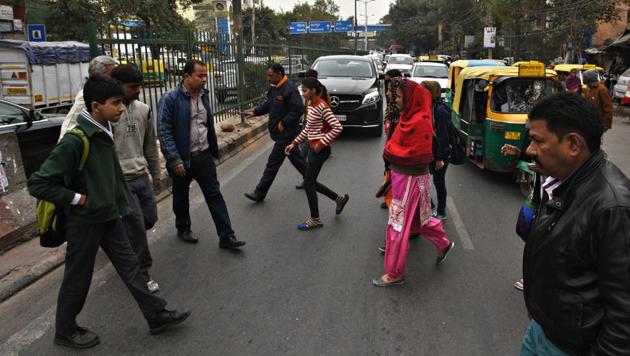Bring multiple authorities on one platform to make Delhi walkable
In the urban mobility hierarchy, walking is relegated to the end. The sidewalks are too high, uneven, broken, encroached upon and are often grabbed by the adjacent plot owners for parking and personal greens.
Traditional cities in India, such as Shahjahanabad, had been walkable — with a distance of one mile from one end to the other. The streets were narrow and shaded. The mohallas or the communities had a network of introvert open spaces, chowks and chopals as collective spaces of incredible pluralism.

But with the advent of automobile, the urban scale exploded and faster and wider roads for carrying the vast traffic have overtaken the city. Still, about one-third of trips in Delhi are done by walking. It is not only emissions free, but the walkways are the lungs through which freedom, leisure and pleasure are exhaled. They embody place and non-place and freedom without obligation.
However, in the urban mobility hierarchy, walking is relegated to the end. The sidewalks are too high, uneven, broken, encroached upon and are often grabbed by the adjacent plot owners for parking and personal greens. Unfortunately, the local authorities, police and even the RWAs don’t consider these as the violation of rights of the pedestrians, including the disabled and those on wheelchairs.
The walkways, wherever provided, are often too narrow and without facilities such as public toilets, signage, road markings, zebra lanes, bus shelter, trees, benches, etc. There are multiple authorities working at cross-purposes and residents are at a loss to know whom to approach. The urban plans usually have top-down approach and leave out action at the local level.
The participatory planning at local level can be an alternative to the Master Plan, which facilitates the community to understand, participate and address their issues and problems. These can link with the local priorities and community needs and detail out the exact manner in which a certain activity must be accomplished. These can be interactive action programs, which synchronise political apparatus, administrative system and forge a state-citizen partnership that make the municipal bodies and road development agencies accountable and responsible to the people.
An important aspect of walkable Delhi is that it should be universally accessible. The present approach of providing foot-over bridges (FOB) and subways intimidate the pedestrians and are hardly used. As a result, pedestrians risk their lives crossing through the high intensity, high speed road traffic.
To create active streets, primary pedestrian access for buildings should be along the shortest walking distance from nearest public transport. The building facade should be transparent for safety of women and facilitate visual surveillance of the street. Vending spaces along the walking path activate the street and make it safer. Footpaths can be planned with utilities including drinking water kiosks, benches, trees and toilets.
It is necessary to provide wide and safer pedestrian corridors at grade while the motorised vehicles move up and down. Such facility should be provided on all major roads, highways, in front of transport nodes (railway stations, metro stations, bus terminals), etc. To cater to wheelchair users, the walkways require avoidance of steps and provision of curb ramps.
Depending upon the peak hour volume, the footpath should be designed as per the Level of Service (LOS) standards for pleasant and comfortable walking.
It is a challenge to implement plans in view of the multiplicity of authorities. This requires a systems approach that encompasses enforcement, financing, navigating, evaluation and monitoring. The multiple authorities can be brought on a common platform through a mobile based, interactive software — pedestrian management modelling (PMM). The citizens can give their suggestions and post complaints, which are taken up by the concerned agency/department and an ATR is given within time-bound manner.
AK Jain is a former commissioner (planning) of the Delhi Development Authority






